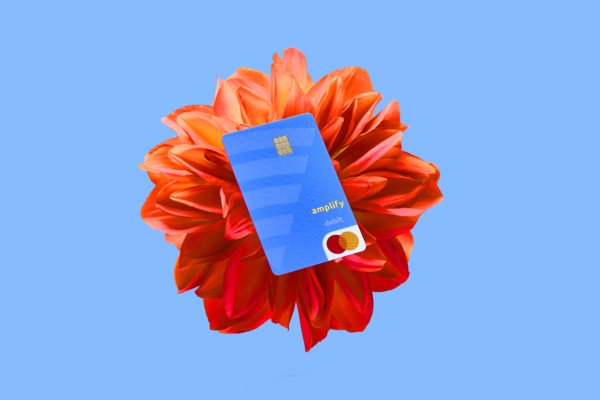
Bank Better: Basic Bank Fees and What They Mean

Have you ever checked your bank statement, only to realize you’ve been nickel and dimed by a monthly maintenance fee, minimum balance fee, overdraft charges, and more?
It may seem like these bank fees are simply the price you pay for keeping your money safe in a checking account or savings account. But we have good news—these bank fees don’t have to exist!
Amplify Credit Union no longer charges fees on our checking and savings accounts (and more!) We believe that money should go toward your financial goals—not to us.
We’re by no means the only financial institution that has eliminated fees (but we have eliminated more fees than a lot of others…just sayin’). By choosing your financial institution and account wisely, you may be able to save hundreds of dollars each year. Here’s what you need to know!
Finding Banks with No Fees
With many financial institutions, fees are just the way it is—even if you do all the right things like maintaining a minimum balance, never overdrawing your account, withdrawing money only from their ATM, and signing up for paperless statements.
The key to freedom from fees is to find a financial institution that has done away with them altogether. Some banks and credit unions—including us!—have started eliminating fees on checking and savings accounts in an effort to better serve their customers. This does more than just make people happy—eliminating fees can also make banking more accessible.
To find a checking account with no fees, look online for institutions promoting fee-free banking services. Local credit unions are a great place to start. Credit unions are built to serve their members, unlike banks (who serve their shareholders).
Fee-Free Banking is Here
Looking for a financial institution that doesn’t nickel and dime you? If you live or work in Texas, join Amplify!
Common Bank Fees and What They Mean
To find the right fee-free checking and savings accounts, it’s important to understand common bank fees and what they mean—so you can avoid them!
1. Monthly Maintenance Fee
Banks often charge their customers monthly fees just for having an account open and using their debit card. This fee is designed to cover the costs associated with operating and maintaining your account.
Some institutions may waive it if you meet stipulations like:
- Maintaining a minimum balance requirement
- Charging a certain number of debit card transactions per month
- Having a certain number of monthly direct deposits
Other banks will charge the monthly maintenance fee regardless of how you use your account. Like all types of fees, these monthly charges add up over time. Even a seemingly small $5 a month ends up being $60 a year— that’s $600 over the course of a decade!
Here’s the thing—banks didn’t use to charge monthly maintenance fees. In fact, banks were originally set up to benefit themselves: banks use their deposit money to fund investments and other loans. So really, if you’re paying a monthly maintenance fee, you’re paying the bank to use your money to make more money. Not cool!
2. Minimum Balance Fee
Minimum balance fees come into play when your account balance falls below a specified amount. These minimum balance amounts also vary depending on institution and account type. Some accounts may have a minimum balance as low as $5 while others may require you to keep at least $5,000 in your account to avoid getting charged.
If your balance falls below the specified amount, you’ll be hit with a fee. Some banks will charge this as soon as your balance dips, others may only charge it if your monthly average balance is below the amount.
3. Overdraft Fees
Last year, the average nationwide overdraft charge hit an all-time high— $33.58 per overdraft transaction.
An overdraft occurs when you attempt to complete a transaction in an amount that is greater than what is in your account. Instead of declining the charge, the bank allows it to go through. While this common banking feature seems helpful, it can quickly lead to a slew of fees if you’ve lost track of your account balance. If you accidentally make a few charges without knowing that you’ve overdrawn your account, this could mean hundreds of dollars in overdraft fees alone.
There are several ways that overdraft protection can work.
Many overdraft protection programs will automatically transfer funds from your savings account (or another secondary account) if the available balance on your checking account is too low to cover a transaction. Other overdraft programs ensure that checking account transactions are completed, regardless of account balance. This type of program allows you to overdraw your account to pay transactions for which you do not have available funds, up to a certain approved limit.
How your overdraft protection program works depends on your bank’s policies and account type. The best way to avoid these charges is to look for banks with no overdraft fees.
4. Insufficient Funds Fee
Overdraft and insufficient fund fees are closely related. The main difference is that instead of letting your charge go through, the bank will decline your debit card. The bank hasn’t covered what you need, or even transferred any money over to cover the charge— but they’ll still charge you for the attempt.
Like overdraft fees, an insufficient funds fee is often tacked on to every charge that you make that exceeds your balance.
5. Stop Payment Fee
At one point or another, most of us will need to cancel a check or recurring debit card payment that hasn’t been processed yet. This is known as a stop payment. These requests, which can only be made by the account owner, may be made due to:
- A dispute over purchased goods or services rendered
- Accidental errors on the check, such as writing the wrong amount or wrong recipient
- A check was mailed to the wrong address
While you may get to keep your money from the halted transaction, your bank may charge you for the hassle.
6. Return Check Fee
Commonly known as a bounced check, a returned check is a check that a bank declines to pay. While not having enough funds in the account to cover the charge is one of the most common reasons why checks are returned, that usually results in an insufficient funds fee. Checks can be returned for a number of other reasons, including:
- The checking account was closed
- The check has been disfigured
- The check is missing critical information such as a signature
- The check is too old to honor
This means that a hefty $20 or $30 fee may be imposed for something as simple as forgetting to sign your check before you send it off.
7. ATM Transaction Fee
Unfortunately, accessing your money isn’t always free. You can probably use your own bank’s ATM network for free, but if you go outside your bank’s ATM network and use, say, a restaurant ATM, you’ll be hit with fees that range anywhere from $1.50 to $6.
But ATM fees are actually two different kinds of fees: the ATM operator fee and your bank’s non-network fee.
- Your bank’s non-network fee: This is charged by your own bank for using an ATM outside of their network.
- ATM operator fee: When using an ATM outside your bank’s network, the bank or company that operates the machine will also charge you a separate fee. Keep in mind that this is outside of your bank’s control— even if they are fee-free.
In 2020, the national average for ATM fees was a whopping $4.72 per transaction. If you visit the ATM multiple times per week or month, this adds up quickly.
You might not be able to avoid the ATM operator fee if you use a random ATM, but you can at least find a financial institution that doesn’t charge a non-network fee!
8. Debit Card Replacement Fee
Most of us have lost our debit card at one point or another— and if you haven’t yet, chances are you will sometime in the future. Whether it’s a stolen wallet or you left your card behind at the gas pump, you’ll need to call up the bank to cancel it and request to cancel your old card and get a new one.
But here’s the kicker—your bank will probably charge you for the replacement. And if you don’t have time to wait around for a new card, it’ll cost you even more for faster delivery.
We have two pro tips here: find a financial institution that doesn’t charge this fee and make sure you always have a second account or credit card you can use in an emergency. No one likes to go without access to money!
Go Fee-Free in 2022
We’re proud that Amplify Credit Union is fee-free. We want every one of our members to be able to do more with their money—not pay us random fees that no one needs or likes.
While these eight bank fees are among the most common, they are far from the only ones. Take a look at the list of fees that we don’t charge!
Become an Amplify Member
Every Amplify account holder enjoys fee-free banking. That means no overdraft, maintenance, or other banking fees cutting into your pocket.


